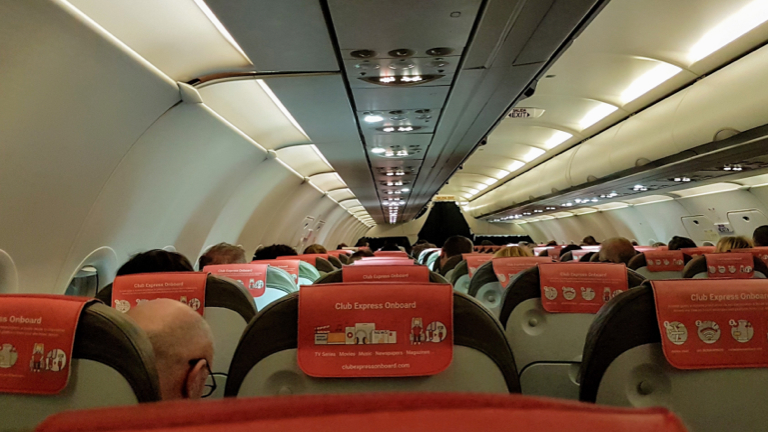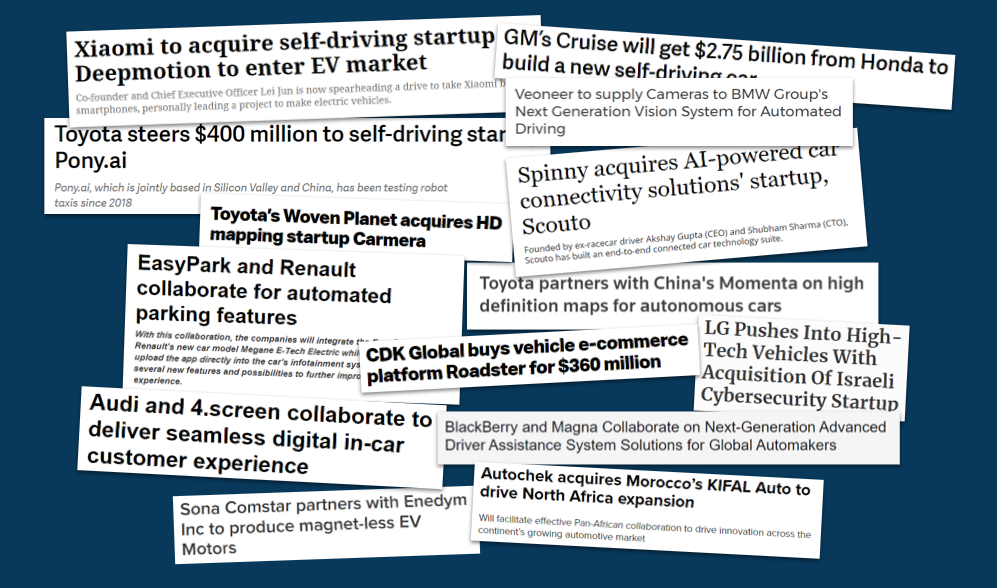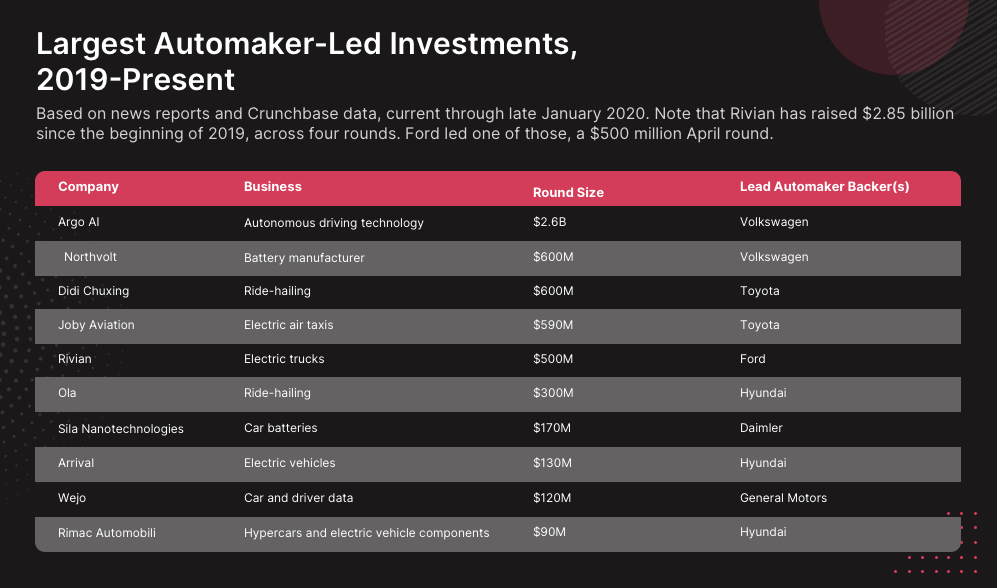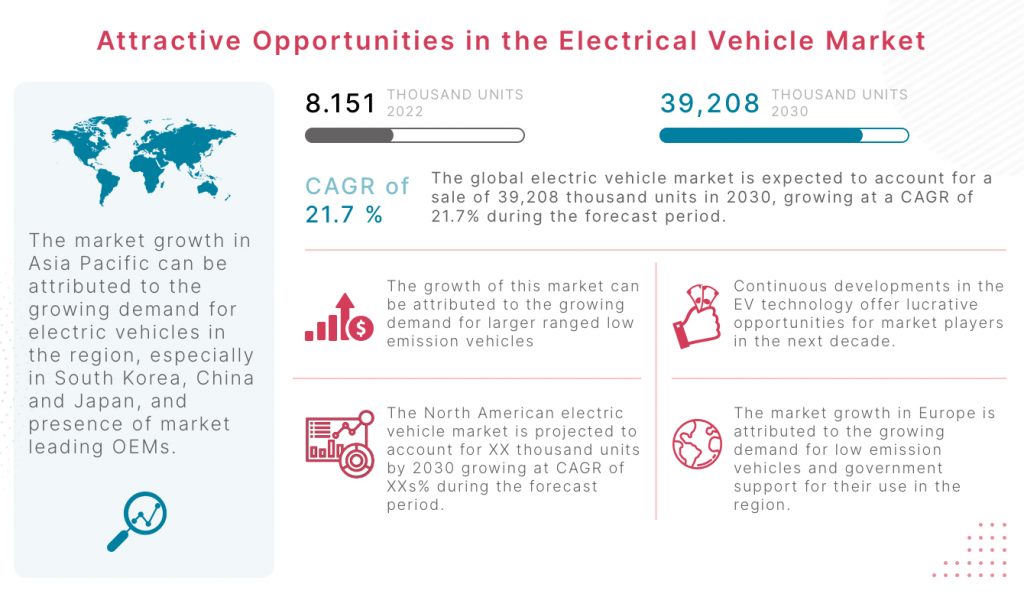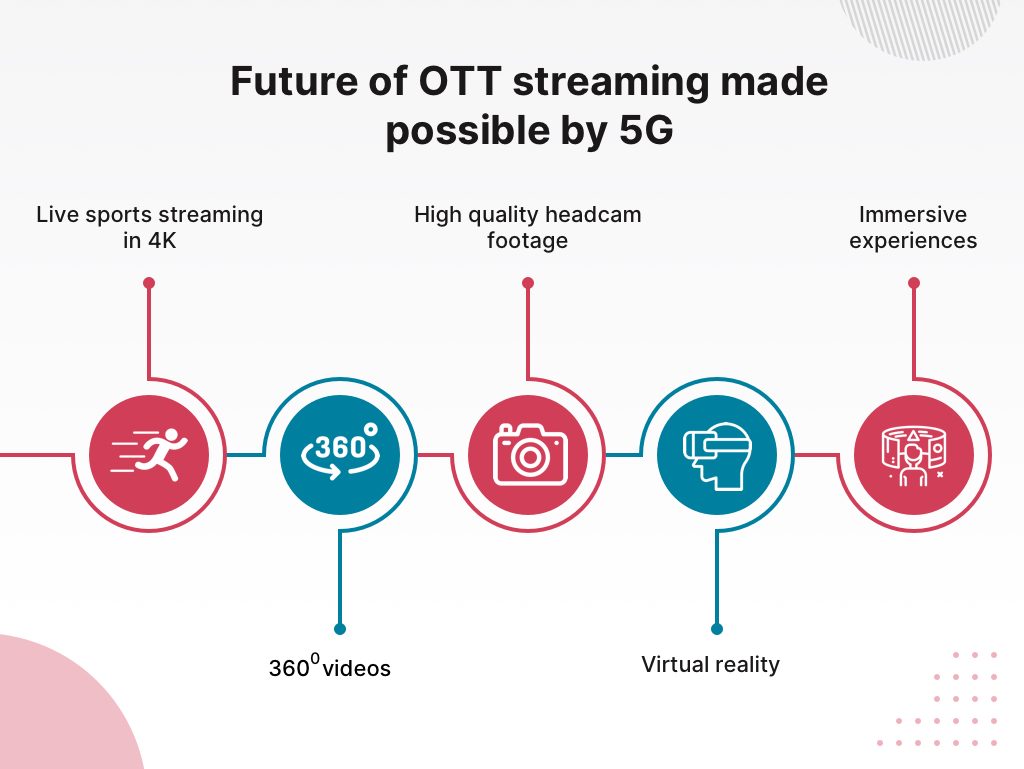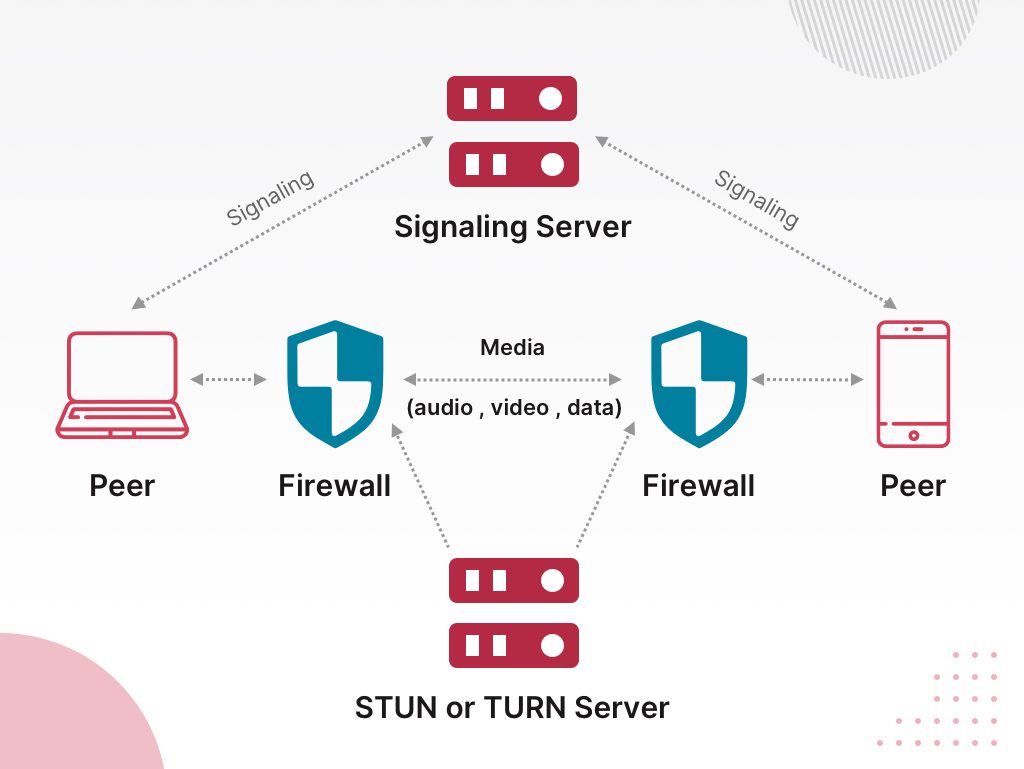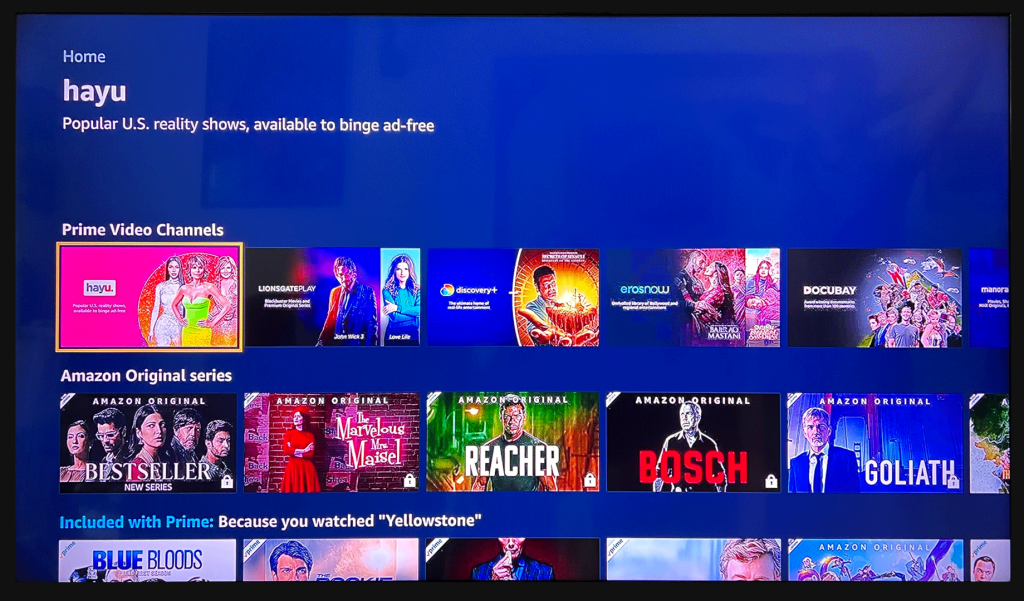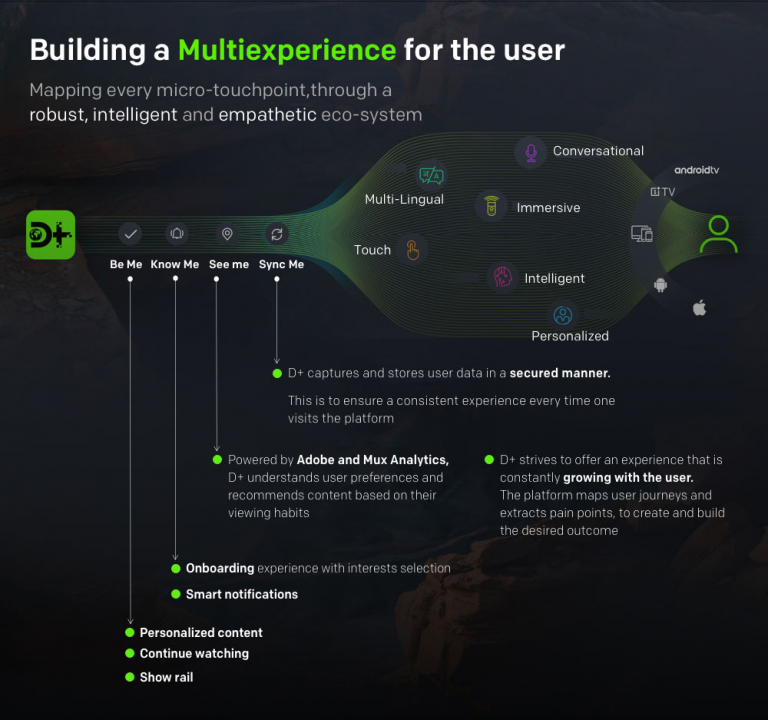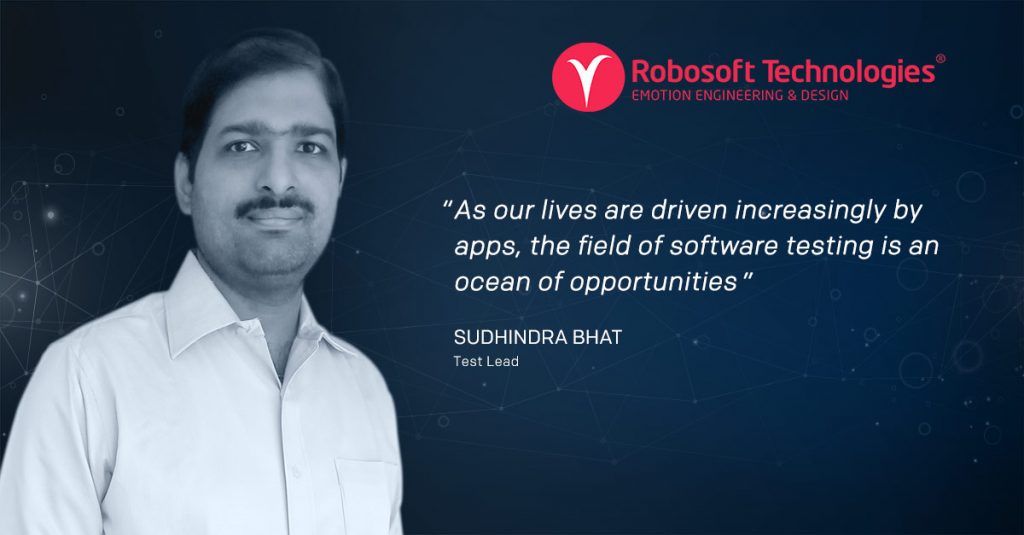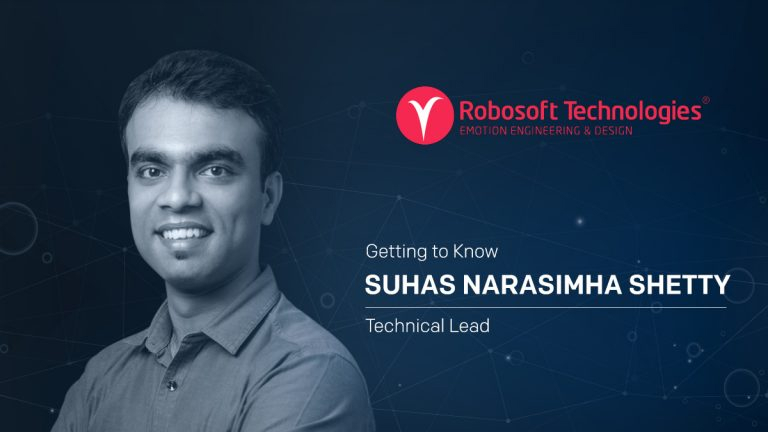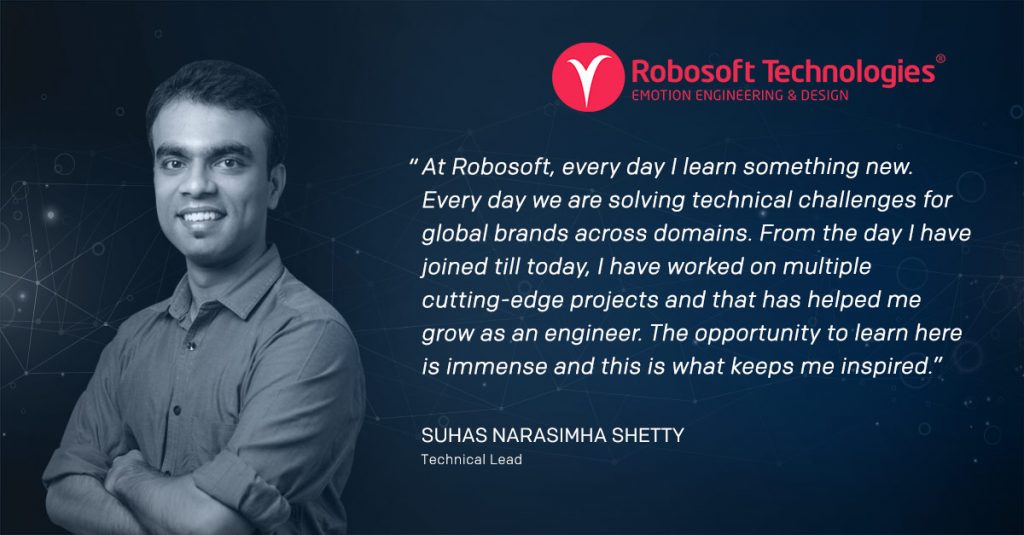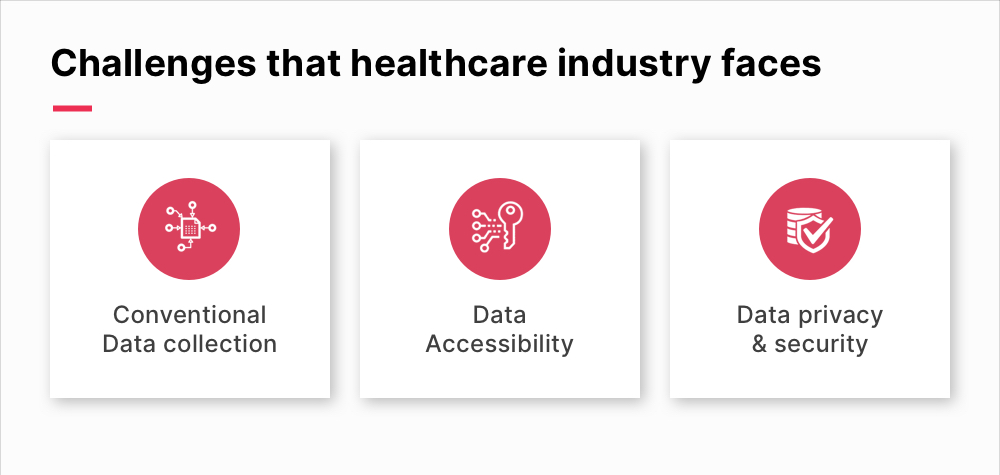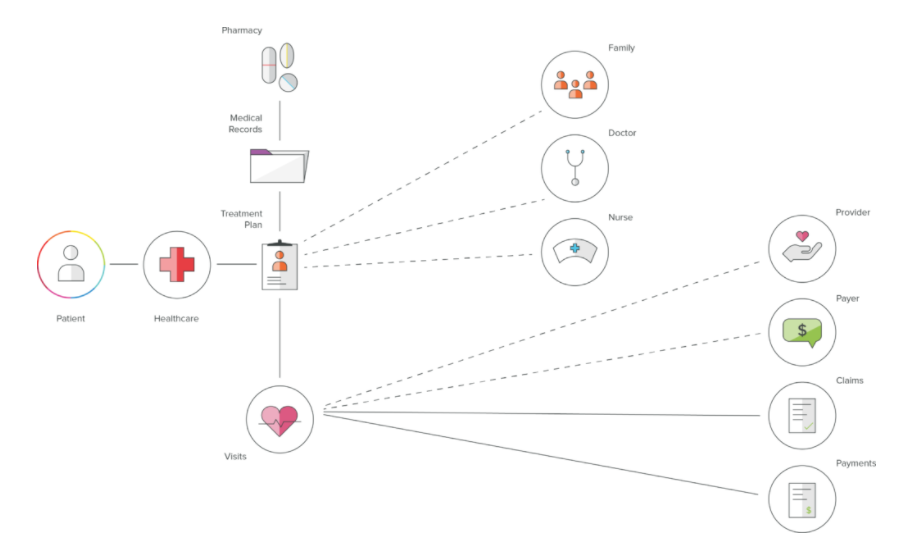The OTT industry has observed a major increase in the number of OTT players in recent years. It resulted in the majority of them competing for the same set of customers with very little to separate each other. While content quality on offer is always going to be the ultimate decider, having convenient OTT monetization models for different sets of targeted customers is always a plus point.
OTT monetization mostly revolves around video-on-demand (VOD) models. Here users pay for a pre-recorded and uploaded or live stream content on an OTT platform.
The first quarter of 2021 has seen a 47% increase in OTT subscriptions in the US compared to the first quarter of 2020. The index is now at 1.03, which means the number of OTT subscriptions is more than the number of people in the United States. The American population will be approximately 330 million people in 2020, and the number of SVOD subscriptions is around 340 million. The global OTT market size was valued at $121.61 billion in 2019, and is projected to reach $1,039.03 billion by 2027, growing at a CAGR of 29.4% from 2020 to 2027.
Subscription video on demand (SVOD) services (i.e. Netflix, Amazon Prime) became the largest OTT revenue source in 2016 by overtaking ad-supported video on demand (AVOD) services (i.e. Pluto TV). SVOD’s share of total revenue is expected to increase from 47% in 2017 to 53% in 2023 and AVOD will see a revenue share of 36%.
Modern content consumers are rapidly moving away from time, place and device dependent content sources like traditional cable or Linear television. There is still a tug of war going on between OTT and traditional TV in countries like India. But, over the years thanks to portable smart devices, SmartTVs and streaming players such as Roku or Chromecast, video content consumption has seen an uptake.
Content producers are finding innovative ways to include advertisements or monetize their content to generate revenue. In a path breaking event in the OTT monetization space, Transmit, a next generation streaming media ad platform, introduced OTT’s first fully automated ad break and content monetization for live sports and entertainment.
In this guide, let’s talk about OTT revenue models, OTT advertising benefits, when and why you should apply a certain OTT monetization model for your OTT platform.
What are OTT Revenue Models
There are thousands of OTT broadcasters currently serving their unique content or an aggregation of the most popular content to their customers. All the successful brands are using a multiexperience OTT platform with the right monetization model to generate revenue. But if we were to categorize these OTT revenue models, the number of ways thousands of OTT brands generate revenue comes down to single digits.
There are primarily 4 OTT monetization models available for professional broadcasters. These are:
i) Monetizing with Advertisements
The Ad-based Video on Demand or AVOD model generates revenue with ads. The content aggregator or the content search platform provides the content to users for free. But there is a catch as the content is served with ads to the users.
The broadcasters make money by charging a fee to advertisers in exchange for a place in the content platform to play commercials. The ads are generally played as video ads, sponsor screens, sponsored content and more. A recent survey by Deloitte shows 55% of the US residents use an ad-supported video streaming service.
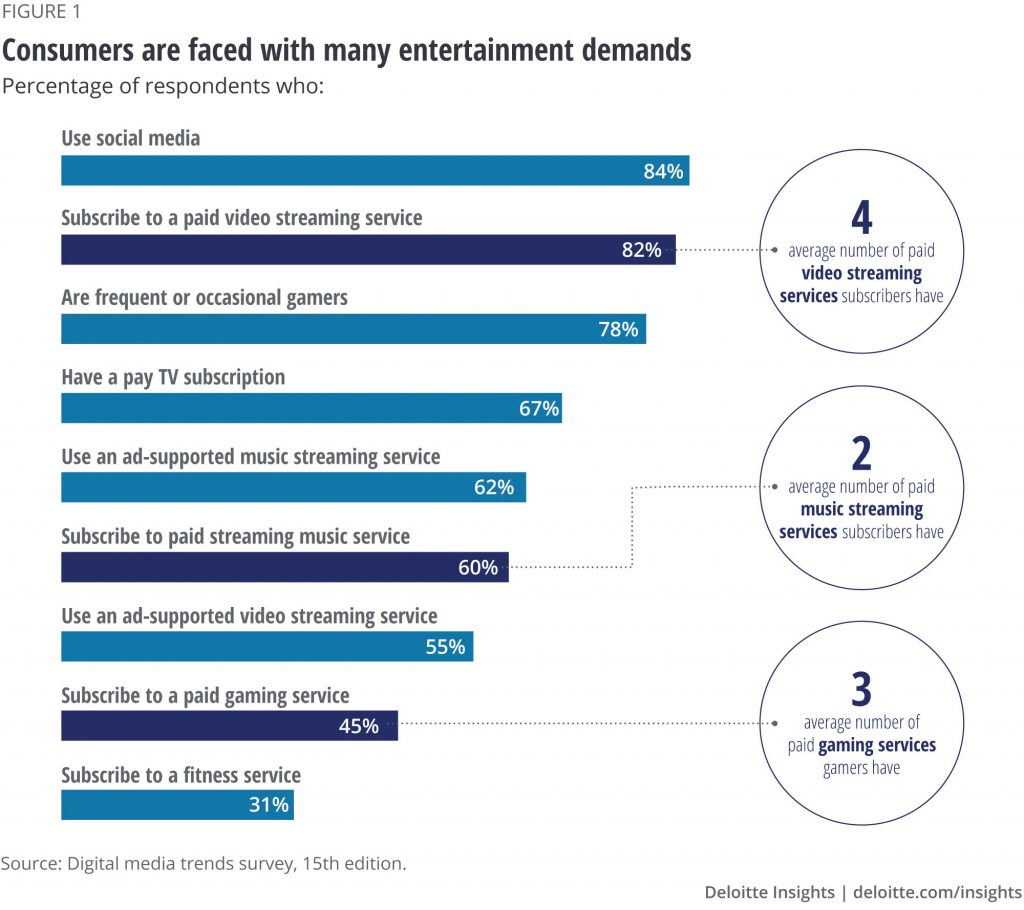
Examples of AVOD businesses: Pluto TV, Tubi, Xumo, YouTube (non-premium).
ii) VOD Subscription based
Subscription-based Video on Demand or SVOD businesses charge a recurring fee weekly, monthly, quarterly, or yearly for full access to their video platform. The SVOD model was first made popular by Netflix and it still continues to dominate popular OTT businesses today.
Examples of SVOD businesses: Netflix, Apple TV+, HBO, YouTube Premium, Voot.
iii) Transactional based content
Transactional Video on Demand or TVOD is the most straightforward OTT revenue model of all. It works on a one time give and take system like buying or renting an item from a nearby shop. Customers buy or rent videos one at a time based on their needs. This OTT model is sometimes also known as pay per view (PPV) or pay per download (PPD).
Examples of TVOD businesses: iTunes, UFC, Sky Box Office, CinemaNow.
iv) Hybrid (SVOD+TVOD+AVOD)
Truth be told, a hybrid business model isn’t a single established business model. Many companies are putting their own spin to already established monetization models to come up with a hybrid model that works for them.
Some businesses like Disney+ are blending SVOD with TVOD as they are offering access to new films on a transactional basis apart from the subscription. Discovery+ categorized their customers on two levels to mix AVOD with SVOD. The lower fee subscribing customers are served their content with some ads, while higher fee subscribers get the same content with zero ads.
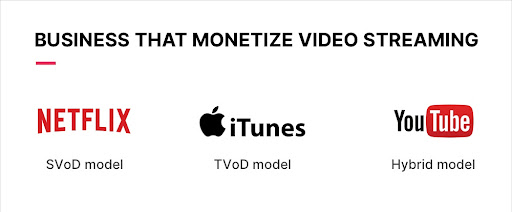
OTT vs VOD: What is the difference
There is one major difference between OTT and VOD. Apart from that the line gets blurrier the more you try to understand the difference.

Typically, OTT umbrella contains three types of content delivery platforms and content.
These are:
- Streaming video on websites or apps like Netflix, Hulu, YouTube, DAZN, Sky Sports, etc.
- Internet-connected devices like TVs (smart TVs) or devices like the Amazon Fire TV stick, Google Chromecast, or the insanely popular Roku streaming device.
- Watching live TV using internet streaming: Popular examples are DirecTV, Sling TV, Hotstar (in India), and the list goes on.
On the contrary, VOD is restricted to content that is not live streamed and can be consumed at any place, any time.
In simple terms, OTT describes “how the content is delivered” while VOD describes “how the content is consumed”.
What are different types of VOD
VOD or Video On Demand enables people to watch their desired videos – anytime, anywhere, and on any video playing device.
Video on demand (VOD) is a promising technology with top-notch and lucrative opportunities in the new cord-cutting status quo. By 2023, Cisco System predicts the number of internet-connected devices to be more than triple of the global population.
OTT has fundamentally changed the content production and distribution approaches when it comes to video consumption. Streaming Media reports that video-on-demand viewing time has grown up to 155% year-over-year, comprising 17 minutes per session on average.
This rapid rise in demand for video content provides endless opportunities to OTT brands to generate revenue using different advertising and subscription models.
Let’s talk about these OTT business models in detail.
AVOD
AVOD is one of the common OTT platform revenue models, where you offer free content to your audience. AVOD businesses generate revenue with ads inserted into the video to monetize it. These can be commercials, pop-ups, or any other type of sponsored content.
Under AVOD, you may choose to run ads at the beginning (pre-roll), in between video plays (mid-roll), or at the end of the video (post-rolls).
Advantages of AVOD monetization model
- AVOD enables businesses to serve free content with ads to their customers across several inventory platforms such as connected TV, desktop, and mobile ecosystems.
- The biggest advantage of AVOD is the possibility of finding new viewers without much effort. With little or no barrier to entry, viewers can get hooked on your content without hitting any hurdles. If you serve a niche demographic or interest group, you may be able to charge higher rates from advertisers enabling you to offer discounted prices to your customers.
- AVOD provides very refined targeting opportunities with more precise data about audience interests than mere age and geo data.
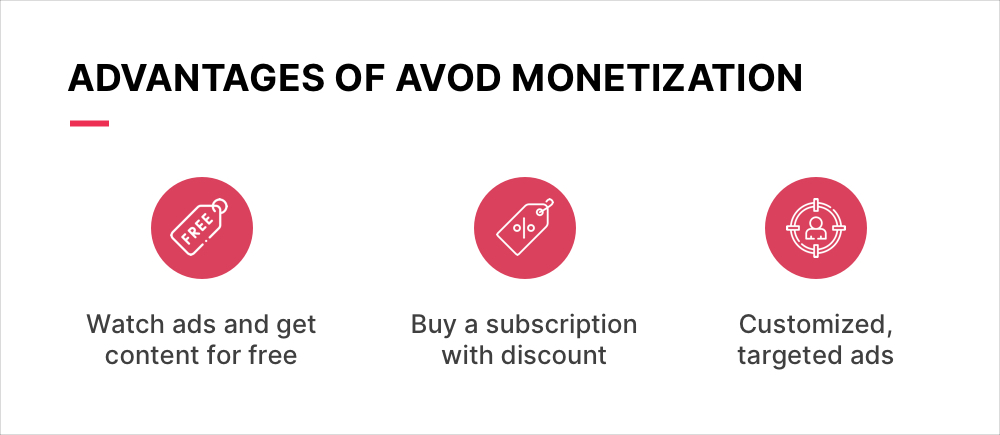
AVOD isn’t as popular among premium content owners and streaming giants mainly because this model generates less revenue compared to SVOD. You may need to gain a substantial audience before you turn a profit.
When is the AVOD monetization model suitable?
If you are serving generic content, how-to and comedy videos, you may use AVOD platforms. These content types usually generate huge viewership, especially the younger audience who are less likely to subscribe or remain loyal to regular entertainment sources. The AVOD model also required you to choose the right ad network to maximize revenue benefits.
SVOD
As mentioned earlier, subscription based video on demand model allows watching as-free video content available on the platform at a flat rate, with a monthly or annual subscription.
With easy-to-unsubscribe policies, SVOD is one of the most lucrative revenue models and makes up the largest segment of the OTT industry.
Advantages of SVOD monetization model
- The SVOD model used by Netflix is extremely popular and hence familiar among households. In fact, a 2019 report finds up to 75% of US households have a SVOD subscription.
- It’s a very efficient model that creates steady income from every customer. SVOD is also associated with high revenue. Because consumers can pay an affordable fee to access the entire content library, many prefer these platforms.
- It provides multiple subscription options to the user to pay weekly, monthly, quarterly, or annually at their convenience.

The SVOD model has a higher entry barrier as big players like Netflix, HBO, Apple TV, Hulu, etc. cover almost 3/4th of the consumer market. This makes it hard to find new customers and harder to retain them. Any change in content, price or the economy causes people to end their subscriptions or switch to another OTT provider. Also, the cost of producing quality content compels businesses to set higher subscription pricing to enable bigger profit margins.
When is the SVOD monetization model suitable?
The SVOD model is perfect for businesses seeking a long-term value by serving constant quality content in the form of movies, TV shows, originals, etc. It is primarily the right choice for businesses focusing on entertainment, health, fitness, eLearning, and other content.
SVOD OTT streaming solutions require extra effort and resources to correctly position your platform in the right target audience. Also, there is the small matter of adopting the best security and encryption integrations to meet the user’s needs.
TVOD
TVOD or Transactional Video On Demand is a rental-based VOD monetization business model where the user rents the content or has access to the service for a short period of time by paying a fee.
TVOD is also sometimes known as pay-per-view (PPV) or pay-per-download (PPD). The model usually involves Download-to-own (DTO) or Electronic sell-through (EST) systems. Another option is renting videos for particular periods.
Advantages of TVOD monetization model
- TVOD is a straightforward and simple model great for serving one-off video content. The power of choice given to consumers lets the businesses charge or offer discounts on the content piece accordingly. Consumers are more willing to pay for high quality content they intend to watch.
- The most attractive reason why TVOD is a great choice is its immediacy. Consumers get access to desired content by renting or buying even sooner than after the general release of specific media content.
- TVOD services enable businesses to retain customers with seasonal content. This strategy suits tutorials, lessons, sports, or other seasonal events. Sky Sports Box Office is a good example of TVOD platforms.
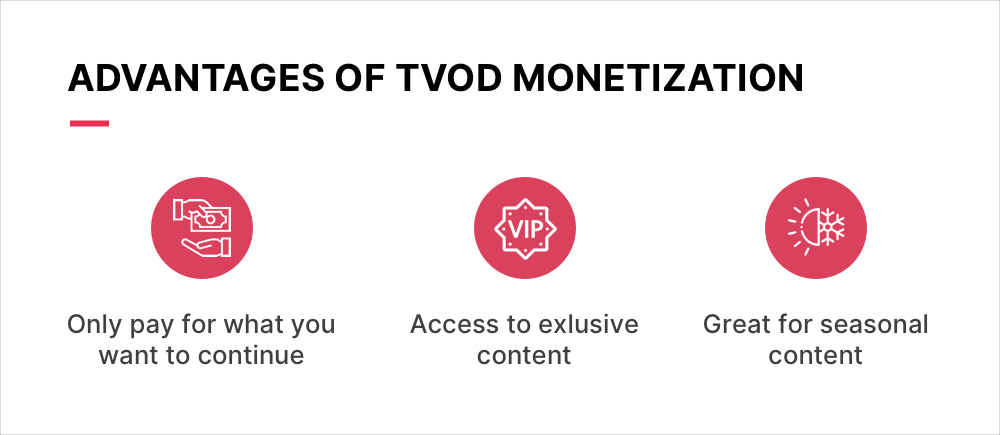
Two of the biggest problems in the TVOD monetization model is getting consistent revenue and gaining consumer confidence. More people are becoming comfortable using services consistently than earlier. Plus having to pay for each additional program can be a frustrating experience.
When is the TVOD monetization model suitable?
Most TVOD businesses work with exclusive content deals and close release windows to drive customers for purchases. TVOD also works best for live streaming services like entertainment events and sports events that are seasonal. The best way to use a TVOD model is to combine it with another VOD monetization strategy for a consistent revenue stream.
PVOD
Premium video on demand or PVOD is more like a special case of TVOD where the user can pay to get access to content sooner than other SVOD or TVOD customers would! For example, premium movies are released on PVOD first and then the subscribers get access via SVOD or TVOD.
Disney’s Mulan was a prime example of a PVOD release. It got its first release as a PVOD as it had to skip the theaters due to the COVID-19 pandemic.
Hybrid VOD
Many OTT platforms are now adopting a hybrid approach when it comes to monetizing their content. AVOD, SVOD, and TVOD hybrid models are a proven approach to profitable advertising in the CTV and OTT ecosystem.
Hybrid VOD monetization model could prove to be the best option in a highly competitive OTT landscape. It offers the best of both worlds to the consumers from TVOD, AVOD, and SVOD. Usually, one of these revenue models is selected as primary, and the others are used for exclusive deals.

Advantages of Hybrid VOD monetization model
The one big advantage Hybrid VOD has over other VOD models is that it provides the best of each monetization model. It also provides flexibility as you can combine selected benefits from each model to create your own hybrid monetization model.
A wisely combined hybrid model can suit nearly any OTT business.
When is the Hybrid VOD monetization model suitable?
Hybrid VOD monetization model works best for businesses who are targeting a vast set of audiences. The second important thing is for your platform to have a vast library of content to cater to each audience type. Therefore, by leveraging the different monetization models, you can meet the needs of various users.
What is OTT Advertising and its benefits
OTT advertising is serving personalized content to different viewers’ devices while they watch the same TV show or movies. Personalized user experience based on AI-powered recommendation engines is one of the most important key factors in designing a successful OTT app. Thus, we can say, OTT advertising is a targeted ad delivery on Internet-CTV sets enabled by programmatic OTT technology.
Due to the widespread adoption of OTT platforms, advertisers can now expand their audience reach that was previously available only on traditional TV. Many consumers in the US are now ‘cutting the cord’ but a report from the Video Advertising Bureau (VAB) says advertising is still essential to the ecosystem.
5 benefits of OTT advertising
OTT advertising is a win-win situation for everybody involved in it. Advertisers love it as they get access to behavioral and personal choice data of consumers they didn’t have access to earlier. Also, they love it for the massive revenue and brand potential such targeted ads can garner. Consumers love it because they get far better options in OTT in terms of content and convenience over regular TV.
Recent advancements in OTT technology made it possible to bring alive both the product and in-store experience of retail brands onto the OTT device. Gree, the world’s largest air conditioner maker, sold 44 million USD worth of merchandise on Kuaishou, China’s leading short-video and live-streaming social platform.
In addition to this OTT advertising also offers:
#1 Sticky ads: If you are an advertiser, you would love a sticky ad where the user can’t fast forward or skip the ad. OTT platforms provide a visible 90 seconds or 2 minutes countdown window to the advertisers to display their ad content. Since the consumers are invested in the OTT content, they let the whole ad play out while resuming the video content afterwards.
#2 Advanced targeting: The OTT registration details of the user cover all the basic demographic data for the advertisers. And after a while, OTT platforms can provide a heap of data about the kind of content a user watches and his behavior. Advertisers can target people based on their unique viewing habits thanks to a comprehensive portrait rendered in numbers.
#3 Advanced reach: OTT advertising provides a unique opportunity to reach the ever-elusive group of ‘cord-cutters’ and ‘cord-nevers’. Broadly speaking, OTT platforms are a boon to advertisers who could formerly only hope to make contact with a blanket TV ad strategy. With the advance reach and advanced targeting capabilities, sky’s the limit.
#4 Advanced attribution: Gone are the days of hoping and wondering for advertisers. OTT advertising can provide attribution in a way that broadcast and linear TV never could. OTT advertisers can now use pixel-based tracking from multiple devices to determine website or product page visits by a potential customer. You can also gauge the time spent on the website, any other clicks made, etc. to gather more actionable data.
#5 First look rights: OTT platforms have the option to provide first look rights to an advertiser. This allows an advertiser to circumvent the targeting restrictions that inherently come with programmatic ad buying and brings several advantages. Now not only do the advertisers get access to top quality content, they can also strategically distribute ads to particular platforms and publishers. This way advertisers don’t have to see a large portion of an advertising campaign go to a single outlet in order to complete an impression campaign.
Which type of VOD is faring well in the current OTT market
SVOD and AVOD are the two most common OTT subscription models found currently with their own place on the market. Advertising is the prevalent revenue model. However, that is going to change as of 2021, 54% of OTT brands plan to change their business models to appeal to a wider range of viewers, with an additional 22 % considering it. Two-thirds of OTT brands are now transitioning to a hybrid monetization approach.
Thus, the best model any publisher can go for is the Hybrid VOD monetization model. It brings the best of both SVOD & AVOD and more.
AVOD expenditure for TV episodes and movies will climb by 144% between 2020 and 2026 to reach $66 billion across 138 countries. AVOD has the highest revenue share of the OTT market of all monetization models. But this revenue fluctuates from season to season and proves to be worse for overall user experience. However, the
AVOD monetization model has a lower barrier of entry and is easier to set up and isn’t dependent on audience size like SVOD.
The SVOD monetization model is excellent for those publishers who are looking for consistent revenue streams. If you have exclusive and premium content for users who are willing to pay for that content, then it becomes a win-win for all parties involved. However, SVOD has a very high entry barrier and is more challenging to set up. It might deter many who’d rather watch free content.
Read about the recent OTT trends and opportunities for current and new brands
Overall, publishers should test all the methods available and see what works for them since the better choice greatly depends on your content type and audience.
Best practices for OTT subscription billing
A good OTT subscription billing experience must deliver:
• Time-to-market speed: OTT billing can also work as a medium for content promotion. However, publishers must create, test, and refine promotions rapidly without much IT intervention every time. This accelerates and improves the customer acquisition process.
• Dynamic retention: OTT platforms have the leeway to manage entitlements of the customers to keep them connected to the content even in the event of temporary issues. This works well for a superior user experience rather than reducing retention from rigid entitlements.
• Support for multiple currencies, languages, and payment options: Consumers love personalization. And what more they would love than seeing their language being used for transactions for their preferred payment method.
• Scale and reliability: If you provide quality content and gain a large user base, you must always be prepared to handle large demands with quick turnarounds. A slow or difficult initial transaction drives customers away.
• Robust finance, tax, and anti-fraud support: Consumers trust their credit and debit card details with you to provide them a seamless experience. Hence it becomes paramount that your billing solution should proactively screen for fraud along with providing a defined revenue and tax format.
• Intelligence for continuous improvement: Have a proactive billing team who are always on the lookout for updated best practices for billing. This way you can benchmark yourself against other OTT providers and stay on top.
How OTT providers are implementing hybrid VOD monetization model
The first step towards implementing a hybrid monetization model is to identify the VOD monetization models that you want to combine. The next step is to identify your primary VOD monetization model and strategize how you are going to introduce the remaining models.
The final step, of course, is to build a multi-device, multi-platform OTT streaming solution that captivates your audience.
Some businesses like Disney+ are blending SVOD with TVOD. Disney+ costs about $X/month, but offers TVOD access to new films like Mulan. Another prominent example, Hulu blends AVOD and SVOD. Low-level subscribers pay a small fee to watch their programs with ad interruptions. High-level subscribers pay more, but get to watch with 0 ads. In this hybrid model, you can make some portion of the content library free-to-view with ads inserted, and lock the rest of the library for paying subscribers.

Looking at Hulu or Apple TV, for instance, both services offer a subscription (SVOD) model. However, you can watch videos with ads for free on Hulu, as an AVOD model. As for Apple TV, the service gives you an alternative to buy or rent movies and shows (TVOD).
Read: How to design an experience-based subscription model for your business
What are other content monetization opportunities available
Apart from the traditional OTT monetization models discussed earlier, content providers can find their own way of monetizing their content. Let’s discuss some of these opportunities below:
Live stream content pre-order
Content providers can put up live stream content for pre-order as soon as the feed is available at their end. This takes care of your marketing, audio & video monetization, and other crucial aspects in one go.
World renowned musician Kanye West hosted a listening event at a stadium in Atlanta for his much awaited music album, Donda. The event was attended by 42,000 fans who paid between $25-$100 per ticket. Not only that, the listening party was live streamed by Apple Music and watched by 3.3 million viewers – a record breaking number. Another such listening party for an updated version of the album recorded a whopping 5.4 million views and $4M in ticket sales. To top it off, the event recorded $7M in merchandise sales at the venue alone.
Crowdfunding & Donation
Some content becomes an instant hit among the people and they just keep coming asking for more. An independent movie or a short TV show, or a short video, it can be anything. You can use the popularity for your benefit by letting your end consumers donate for the next production budget.
Theater and OTT collaboration
Theaters were one of the worst affected businesses in the media industry during the pandemic. But this misfortune created a new opportunity for both theater and OTT players. Towards the end of the pandemic, a group of theater owners have begun to form a consortium and digitally broadcast content in theaters. Thereby theaters have now become experiential spaces for OTT consumption.
Content aggregation
Many up and coming OTT players like Aha TV, Hoichoi use content aggregation to provide off the shelf OTT content to their subscribers. They prepare a combined EPG for all channels and make revenue off the subscriptions for content that is not their own.
End-user wallet
Create a digital wallet for your end users where they can store credit points based on purchases. These users can buy, store, manage and spend their store credits to watch their favorite content anytime they want.
Restricted subscription access
Get restriction access certificates for certain geographically restricted globally popular content. Once you get them, you can allow the streaming of such content for an excess charge in the restricted geographies.
Content creation processes
It is not only the final product that earns money in OTT services. There are multiple monetization opportunities in content creation, content transformation (people use different cameras, aspect ratios etc. during shooting. They need to be synergized into a common format), content processing (adding subtitles, language overlay), content storage and retrieval.
What is new in OTT?
OTT primarily refers to sending content over-the-top or over the internet. OTT monetization models primarily refer to videos (SVOD, AVOD, TVOD). But increasingly there are new content formats gaining much prominence such as text and audio OTT.
Text OTT or OTT messaging refers to the phenomenon where OTT apps use the internet as a method to connect phone calls and send MMS and SMS messages. For example, iMessage, WhatsApp, and others allow users to send messages whenever the device is connected to the internet.
Audio OTT platforms deliver content over the internet to the consumer by procuring content from publishers/music labels/other distributors. The content is usually accessed through an independently hosted application. For example, Spotify, SoundCloud, iTunes, internet radio stations and podcasts.
Monetization of all these current content formats can be coined under new terms – SCOD, ACOD, TCOD – where C stands for Content.
Conclusion
As we are seeing a huge tectonic shift in consumption habits of global consumers, it presents an opportunity to every OTT provider, irrespective of their budget, size and industry. SVOD, AVOD, TVOD monetization models will likely continue changing and
weaving, so we can expect more new approaches to the rapidly developing OTT and CTV market.
The OTT market is inclusive of all publishers as long as they have a sufficient budget. Even if you are a small publisher, you should have no trouble getting a few advertising deals (e.g., with SpotX or Google ADX) to start monetizing and building your revenue stream. The only real hurdle to entering the market will be whether you have a large enough team to handle your development needs.
As the saying goes, a long journey begins with a small step; content providers must start with one monetization model that meets business needs and then gradually integrate other models. It enables you to keep a check on important things like customer experience and opens up multiple lucrative opportunities for audience engagement.
So many businesses have put their own unique spin on the OTT industry. We’re excited to see what combinations are dreamed up next.
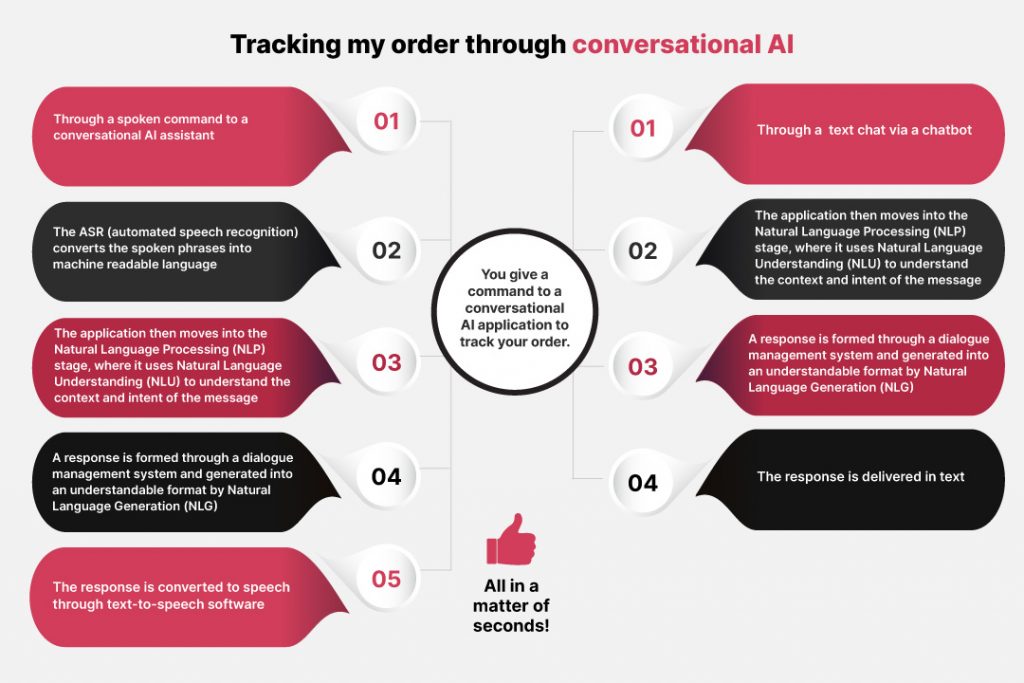
 Example of a bad AI chatbot interaction
Example of a bad AI chatbot interaction
